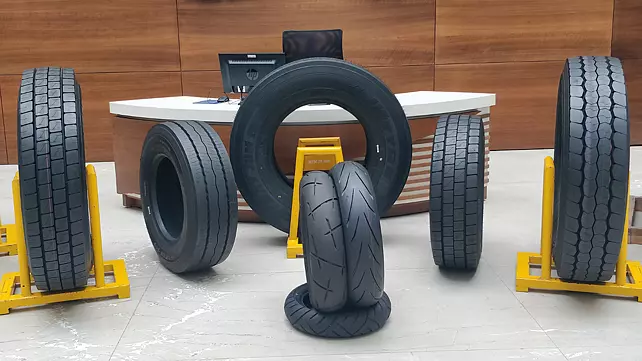Introduction
Rubber tires play a pivotal role in the automotive industry, providing the necessary traction, durability, and safety for vehicles on the road. What many may not realize is that the secret behind the black hue of these essential components lies in a material known as carbon black. The fascinating world of tire carbon black explores its role in black rubber tires and its significance in various mechanical rubber goods.
1. Understanding Carbon Black
Carbon black is a form of elemental carbon, produced by incomplete combustion of hydrocarbons. This versatile material finds applications in a wide range of industries due to its unique properties. In the context of rubber, carbon black acts as a reinforcing agent, enhancing the performance characteristics of rubber compounds.
a. Reinforcing Properties
One of the primary reasons carbon black is incorporated into rubber formulations is its ability to reinforce the material. The addition of carbon black strengthens the rubber matrix, improving its resistance to wear, tear, and abrasion. This reinforcement is crucial for the longevity and performance of rubber-based products, particularly in applications with high-stress conditions.
b. UV Protection
Carbon black also serves as an excellent UV stabilizer. Rubber is susceptible to degradation when exposed to ultraviolet (UV) radiation from the sun. The inclusion of carbon black in rubber formulations helps absorb and dissipate UV light, protecting the rubber from premature aging, cracking, and deterioration.
2. The Role of Carbon Black in Black Rubber Tires
a. Achieving the Iconic Black Color
The aesthetic appeal of black rubber tires is not merely a stylistic choice. Carbon black imparts the characteristic black color to rubber, making tires not only visually appealing but also providing an indicator of the tire’s composition. The deep black color indicates a high carbon black content, suggesting a robust and well-formulated tire.
b. Heat Dissipation
Beyond color, carbon black plays a crucial role in enhancing the thermal conductivity of rubber. Tires experience significant heat generation during friction with the road surface. Carbon black helps dissipate this heat efficiently, preventing the rubber from overheating and ensuring optimal tire performance.
c. Traction and Grip
Tire traction is a critical factor for vehicle safety and performance. Carbon black’s reinforcing properties contribute to the development of a tread compound with improved grip on various road surfaces. This is particularly important for maintaining control in wet or slippery conditions, enhancing both safety and overall driving experience.
3. Carbon Black in Mechanical Rubber Goods
While black rubber tires are perhaps the most visible application of carbon black, their significance extends far beyond the realm of the automotive industry. Mechanical rubber goods encompass a wide range of products used in industrial, commercial, and consumer applications. Carbon black plays a vital role in enhancing the performance of these goods.
a. Industrial Belts and Hoses
In industrial settings, rubber belts and hoses are commonly used for conveying materials, transferring fluids, and driving machinery. The inclusion of carbon black in these rubber components imparts the necessary strength, flexibility, and durability required for demanding industrial applications. The reinforcement provided by carbon black ensures that these components can withstand the rigors of heavy-duty use.
b. Seals and Gaskets
Seals and gaskets are critical components in various mechanical systems, preventing leakage and ensuring the proper functioning of machinery. Carbon black, with its reinforcing and UV-resistant properties, enhances the longevity and performance of rubber seals and gaskets, especially in outdoor or exposed environments.
c. Vibration Isolation Mounts
In applications where vibration isolation is crucial, such as in machinery and industrial equipment, rubber mounts play a vital role. Carbon black reinforcement improves the resilience and damping characteristics of these mounts, effectively isolating vibrations and reducing the transmission of noise and shocks.
Advantages of Carbon Black in Mechanical Rubber Goods
Carbon black, a versatile material derived from the incomplete combustion of hydrocarbons, offers a myriad of advantages when incorporated into mechanical rubber goods. Carbon Black in Mechanical Rubber Goods has Its unique properties make it an indispensable component in various rubber formulations.
- Reinforcement and Strength
Carbon black acts as a reinforcing agent, significantly improving the tensile strength and tear resistance of rubber. This reinforcement results in mechanical rubber goods that can withstand heavy loads, wear, and abrasion, ensuring a longer lifespan.
- UV Protection
Carbon black functions as an effective UV stabilizer, protecting rubber from the harmful effects of ultraviolet radiation. This is particularly crucial for mechanical rubber goods exposed to outdoor conditions, preventing premature aging, cracking, and deterioration caused by prolonged sun exposure.
- Thermal Conductivity
In applications where mechanical rubber goods experience friction or heat generation, carbon black aids in efficient heat dissipation. This is vital for preventing overheating, maintaining optimal performance, and prolonging the life of rubber components.
- Electrical Conductivity
Carbon black imparts electrical conductivity to rubber, making it an excellent choice for applications where static electricity buildup is a concern. This is particularly important in industrial settings to prevent static-related issues and ensure the safe operation of machinery.
- Coloration and Aesthetics
The addition of carbon black imparts the classic black color to rubber goods, providing a visually appealing and recognizable aesthetic. This is particularly relevant for consumer products where appearance plays a role in product perception and brand identity.
- Traction and Grip
Carbon black’s reinforcing properties contribute to the development of rubber compounds with enhanced traction and grip. This is critical for mechanical rubber goods such as tires, industrial belts, and hoses, where reliable traction on various surfaces is essential for safety and performance.
- Flexibility and Resilience
Carbon black enhances the flexibility and resilience of rubber, ensuring that mechanical rubber goods can deform and recover without permanent deformation. This is especially important in applications where rubber components undergo repeated stress or strain.
- Noise and Vibration Damping
For mechanical systems requiring vibration isolation, carbon black-reinforced rubber components, such as mounts and isolators, provide effective damping. This minimizes the transmission of vibrations and noise, improving overall comfort and reducing wear and tear on equipment.
- Chemical Resistance
Carbon black contributes to the chemical resistance of rubber goods, making them suitable for applications where exposure to oils, chemicals, or corrosive substances is common. This property is particularly valuable in industrial settings with harsh operating conditions.
- Cost-Effectiveness
The use of carbon black allows rubber manufacturers to optimize formulations for specific applications. This results in cost-effective solutions that meet performance requirements, making carbon black a valuable and economical choice for enhancing the properties of mechanical rubber goods.
Conclusion
In the intricate world of rubber products, carbon black emerges as a silent hero, contributing to the strength, durability, and performance of various goods. From the iconic black rubber tires that grace our vehicles to the essential mechanical rubber components that drive industrial processes, carbon black plays a pivotal role. Understanding and appreciating the science behind this material enriches our perspective on the everyday items that rely on the magic of carbon black for their functionality and longevity.



